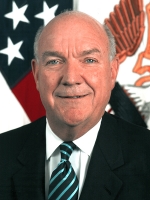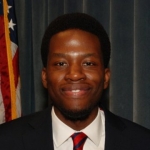
Studying agriculture at Illinois in Ken Dallmier’s day meant having access to some of the most accomplished — and colorful — faculty members anywhere.
“There were many ‘characters’ in the Agronomy Department in the late ’70s and early ’80s, from Professor Marshal McGlamery, who started the semester by standing on his head — while wearing suspenders; to Professor A.W. Berger, who was a gunner in Patton’s army; and Professor Wayne Banwart, who would occasionally bring his guitar to class and sing odes to soil.
“He would also throw a wet handful of soil against the wall to demonstrate the difference between dirt — soil misplaced — and soil, a living entity with unique physical and biological properties. The janitors were not fond of Dr. Banwart.
“I was interested in corn breeding and there were many ‘rock stars’ of applied genetics in Turner Hall, but the late Professor Emeritus George Sprague had the most profound effect on me.
“I had no idea that this quiet and unassuming man had done more than most to feed the world. He was a pioneer in the commercial development of hybrid corn as we know it today. He edited the definitive volumes of ‘Corn and Corn Improvement’ and forgot more than I will ever know about the subject.
“He also let me into his world of the art of corn breeding — now threatened by being lost in the data. Because of him, I went to graduate school at Iowa State, which is where I learned how amazing was the career of George Sprague and how he helped to feed the world.”
It’s been three decades since the Arcola native and president of Cerro Gordo-based Clarkson Grain Co. earned his bachelor’s degree in agronomy. But the memories of two spots on campus in particular remain as vivid as ever.
“The buildings that I remember most are Harker Hall and the Natural History Building — before they were renovated. The sights and smells in those two old buildings fascinated me. It is unfortunate that ‘Night At The Museum’ was not filmed in the buildings.
“The natural specimens and the taxidermy in Natural History were so removed from my farm upbringing in Douglas County. Of course, the living specimens that you routinely encountered in those buildings could be a bit ‘sudden’ if you weren’t expecting them, but they usually scurried away.
“My first UIUC class was Botany 100, which was held at 8 a.m. in 228 Natural History. I was a new student from Arcola with a graduating class of less than 40 students — no, I was not in the top 20 percent of the class — so I was determined to make a good start in college.
“I arrived for class at 7:55, through the doors at the bottom of the lecture hall, to find 200 pairs of eyes of people who were already ahead of me.
“My next class was Econ 101, which was held in Lincoln Theater and had upwards of 700 students. Welcome to the big time.
“The lesson it taught was that though I came from a very small rural school, I could survive and thrive with anyone from the big city. I was never intimidated after that first week.”










© 2025 The News-Gazette, All Rights Reserved | 201 Devonshire, Champaign, IL | 217-351-5252 | www.news-gazette.com
